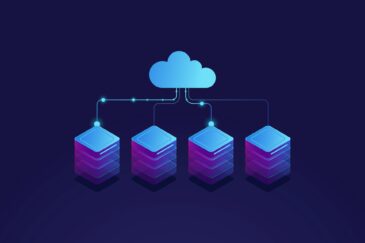What are the Challenges When Migrating from OBIEE to Oracle Analytics Cloud?

- April 4, 2024
- Mohammed Nadeem Uddin
- 0
Published On April 4, 2024
Companies are moving from on-premise to cloud business intelligence solutions to benefit from scalability, flexibility, and cost efficiency. Cloud analytics eliminates upfront hardware investments and offers advanced capabilities like machine learning and real-time analytics. It also enables seamless integration with other cloud services, creating a unified analytics ecosystem that supports innovation and digital transformation initiatives.
Benefits of Migrating from OBIEE to OAC
Migrating from Oracle Business Intelligence Enterprise Edition (OBIEE) to Oracle Analytics Cloud (OAC) has many benefits:
- OAC is cloud-native, offering scalability, agility, and accessibility benefits
- Lower TCO with OAC’s subscription-based pricing and reduced infrastructure requirements
- Advanced analytics solution with machine learning and natural language processing capabilities
- Faster time to value with rapid deployment and self-service capabilities
- Seamless integration with other Oracle Cloud services
- Enhanced user experience with modern interface, interactive visualizations, and mobile support
- Scalability and performance with elastic infrastructure
- Continuous innovation and updates delivered by Oracle
- Support for hybrid and multi-cloud deployments
- Future-proofing with alignment to broader organizational strategies
Steps for Migrating from OBIEE to OAC
Assessment and Planning
- Evaluate the current OBIEE environment, including infrastructure, data sources, metadata, reports, and user requirements.
- Define migration goals, timelines, and success criteria.
- Identify potential challenges, risks, and mitigation strategies.
- Determine the scope of the migration, including which reports, dashboards, and data sources will be migrated.
Infrastructure Setup
- Provision Oracle Analytics Cloud (OAC) environment, including necessary computing, storage, and networking resources.
- Configure security settings, user access controls, and integration with identity management systems.
- Ensure compatibility and connectivity with existing data sources, such as databases, data warehouses, and cloud services.
Data Migration
- Extract data models, metadata, and datasets from the OBIEE environment.
- Transform and cleanse data as needed to ensure compatibility with OAC.
- Load migrated data into the OAC environment, leveraging data loading tools or ETL processes.
- Validate data integrity and accuracy to ensure consistency between OBIEE and OAC.
Metadata and Content Migration
- Export metadata definitions, including logical columns, hierarchies, calculations, and security policies, from the OBIEE repository.
- Convert and map metadata structures to OAC format, ensuring compatibility and consistency.
- Migrate reports, dashboards, and other content artifacts from OBIEE to OAC, preserving formatting, layout, and interactivity.
- Test migrated content for functionality, performance, and visual fidelity.
User Training and Adoption
- Provide training and support to end-users to familiarize them with the OAC interface, features, and workflows.
- Communicate migration plans, timelines, and benefits to stakeholders to ensure buy-in and participation.
- Address user concerns, questions, and feedback throughout the migration process.
Testing and Validation
- Conduct thorough testing of migrated data, metadata, and content artifacts in the OAC environment.
- Perform functional testing to validate reports, dashboards, and analytics against business requirements.
- Test performance and scalability of the OAC environment under different usage scenarios.
- Address any issues, discrepancies, or gaps identified during testing and validation.
Deployment and Go-Live
- Coordinate deployment of migrated content to production OAC environment.
- Communicate go-live plans and cutover activities to stakeholders.
- Monitor system performance and user feedback after migration to ensure a smooth transition and address issues promptly.
Post-Migration Optimization and Support
- Continuously monitor and optimize the OAC environment for performance, scalability, and cost-effectiveness.
- Assist users and administrators with ongoing support and troubleshooting when necessary.
- Record best practices from the migration process for future improvement.
Challenges When Migrating from OBIEE to OAC
Migrating from OBIEE to OAC can be a complex process with several challenges. Here are a few of them:
Data Source Compatibility
OBIEE can be connected to various data sources, such as databases and data warehouses. It is essential to ensure that these data sources are compatible with OAC and can be integrated seamlessly. Sometimes, certain connectors or integration methods might not be available in OAC, requiring changes to data pipelines or ETL processes.
Metadata Mapping
Translating metadata structures like logical columns, hierarchies, and calculations from OBIEE to OAC can be challenging. Differences in how metadata is defined and managed between the two platforms could require careful mapping and transformation.
Report and Dashboard Conversion
OBIEE reports and dashboards often have complex layouts, formatting, and interactivity. Converting these artifacts to OAC while preserving their functionality and aesthetics can be time-consuming. Additionally, certain features or functionalities available in OBIEE may not have direct equivalents in OAC, which might require redesign or customization.
Security and Access Control
Ensuring that security policies and access controls are migrated correctly from OBIEE to OAC is critical for maintaining data integrity and compliance. This includes user roles, permissions, data-level security, and integration with identity management systems.
Performance Optimization
Optimizing the performance of reports, queries, and data visualizations in OAC may require adjustments compared to OBIEE. This could involve fine-tuning data models, optimizing SQL queries, and leveraging OAC’s caching and indexing mechanisms.
User Training and Adoption
Migrating to a new analytics platform involves a learning curve for end-users accustomed to OBIEE. Providing adequate training and support to help users adapt to OAC’s interface, features, and workflows is essential for successful adoption.
Customizations and Extensions
OBIEE implementations often involve customizations, extensions, or integrations with other systems. Ensuring that these custom components are compatible with OAC and migrating them can be challenging.
Testing and Validation
Thorough testing is necessary to ensure that migrated reports, dashboards, and underlying data behave as expected in OAC. This includes functional testing, performance testing, and validation against business requirements to identify and address any discrepancies or issues.
Change Management
Managing organizational change and obtaining stakeholders’ buy-in throughout the migration process is crucial. Clear communication, stakeholder engagement, and addressing concerns or resistance to change help facilitate a smooth transition.
Licensing and Cost Considerations
It is essential to assess the licensing requirements and cost implications of migrating to OAC compared to OBIEE. Depending on the organization’s needs and usage patterns, OAC may offer different pricing models and options that must be evaluated.

Services
Products
Company
Copyright © 2024 Rite Software Solutions & Services LLC. All rights reserved.



